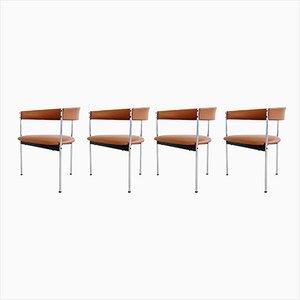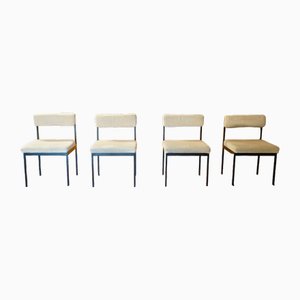
Swiss interior and furniture designer Dieter Wäckerlin (1930-2013) is best known for his ultra-reductionist mid-century furniture. Although Wäckerlin’s professional career started in 1950 and lasted nearly three decades, his designs - which are characterized by precise lines - are usually associated with purist tendencies of the 1960s.
Born in Basel in 1930, Wäckerlin undertook a carpentry apprenticeship and design internships in Paris before splitting his professional career between his native country and Germany. His earliest, and best-known commercially produced work was for Behr, a furniture manufacturer located in Osnabrück, in the north of Germany. The E-226 Canberra Sideboard (1956), and the B40, B41, and B60 Sideboards (all 1957-58 and part of the multifunctional Buffet Series) were born of the Wäckerlin-Behr collaboration.
Most of Wäckerlin’s work, though not as famous as his designs for Behr, was produced by family-owned manufacturer Idealheim in Basel. Almost uniformly square or rectangular in shape, Wäckerlin’s DW Wall System (1960s), along with his sideboards and buffets are decidedly pared-back, with an aesthetic bordering on austere. The only curves present in his designs can be seen in the small number of dining chairs and tables which were produced by Idealheim, as well as the conspicuously named Round Chair for Cassina /Knoll, which was awarded the Gute Form prize in 1964. Wäckerlin also produced designs for other manufacturers including the Saffa Light for Swiss manufacturer SLZ (1950s), which featured an elbow-like cuboid composed arm.
Over the course of his career, it is believed that Wäckerlin designed over 200 items of furniture, at least 120 of which were put into production. In the 1970s, he opened a design store, stocking brands such as Cassina, B&B Italia, Artemide, Kartell, Flos, and Poltronova, the first in Switzerland to do so. In 1978, Wäckerlin’s collection for Idealheim was acquired by Mobimex, a young Swiss company. One year later, he developed (with Edlef Bandixen) an innovative wooden material, known as Diagonal Massive, that was used to produce tables for Dietiker Möbel, a company who had worked with the designer Willy Guhl.
Wäckerlin passed away in 2013. Though relatively unknown in many design circles, Wäcklerin’s oeuvre has recently been discovered by many for the first time, and in 2016, was the subject of an exhibition at the Okay-Art Gallery in Basel, entitled “Dieter Waeckerlin und Idealheim”.


